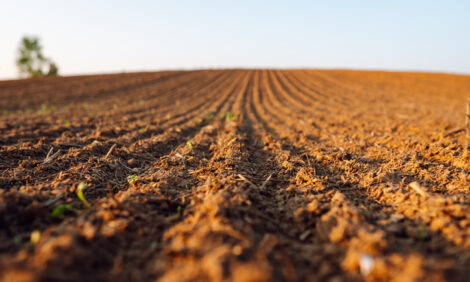



Food Safety Affected by Dairy Cow Housing and Husbandry
The European Food Safety Authority (EFSA) asked its Biological Hazards Panel to deliver a report on 'Food Safety aspects of dairy cows housing and husbandry systems'. The report is based on a number of findings presented by the Animal Health and Welfare Panel (AHAW), which addressed animal welfare aspects and the BIOHAZ Panel who focused on the food safety relevance. Summarised by Charlotte Johnston for TheDairySite.
The report confirms that the main relationships between animal welfare and food safety are stress and malnutrition which lead to increased susceptibility to microbial infection. Microbial infections can be zoonotic diseases such as Salmonella, E. coli, M. bovis, which can be transmitted to humans directly or through food products. There are a number of different ways the bacteria can be transferred. The first been through cattle on farms, the original source of food borne pathogens that cause human bacterial diseases are faeces. This would be spread through direct contact, or contamination of the wider environment due to spread of organic wastes/ effluents from dairy farms.
Another way in which they can be transferred is through milk. Raw milk can be contaminated with a number of different microbial hazards, however the majority of consumption of raw milk occurs primarily on-farm. Generally, when milk is pasteurised the heat treatment makes pasteurised milk one of the safest foods from animal origin. It is suggested that milk/ milk products could be responsible for eight per cent of all food-borne illnesses, compared to 16 per cent for meat/ meat products and 24 per cent for eggs/ egg products. With regards to beef from a dairy perspective, its appears that Salmonella and verocytotoxigenic Escherichia coli are the most common bacteria.
How Does the Dairy Cow Become Infected?
The dairy cow can hold a number of infected bacteria in the intestines, hooves and hide. These can be transmitted through a number of different ways most notably contaminated feed/water supply, microorganisms on pasture through spreading of muck, faeces and contact with other infected animals.
Dairy cows with higher stress levels are more likely to pick up these pathogens. This stress is often through inappropriate handling, inadequate feeding/ watering, inappropriate temperatures, noise, high concentrations of anemia, hydrogen sulfide or carbon dioxide in confined spaces.
How Can Feed-borne Pathogens be Prevented?
Cow housing
Effective cleaning and disinfection of all housing should be carried out regularly. With regard to flooring, from an animal welfare point of view grooved flooring provides more grip and support for the cows with less slip. However, grooved floors are difficult to clean and can increase the risk of food borne pathogens. Whatever flooring is in place, should be thoroughly cleaned with disinfectants and sanitisers. To increase the effectiveness of this try to ensure that appropriate measurements are used (avoid over diluting disinfectants), and use clean and hot water (above 25 degree Celsius). Another conflict occurs with bedding, which is beneficial for cattle welfare but is the possible host for numerous bacteria and allows contamination onto animal hides. The solution here is to proved deep, clean and dry bedding. Transportation should also undergo thorough cleaning and disinfecting.
Avoid mixing animals
- Segregate young and old cattle
- Purchase cattle from known sources
- Keep new cattle purchased in isolation for a suitable period of time
- Ensure all sick animals are completely isolated from the herd, and milk if affected, i.e. through mastitis should be tipped
- Even although animals may be physically separate, bacteria can be transferred through handling facilities – regular feeding will reduce this risk
Feeding practices and facilities
Prevention of feed borne pathogens can be done through regular cleaning and disinfecting all water troughs and feeders. It would also make a difference to the levels of pathogens whether all cows access the same feeder or whether they have individual ones. Stress can be caused through irregular and inadequate feeding.
With regard to feed it is advisable to get feed supplies from reliable sources, and use quality food/ silage/ water. It is recommended not to graze cattle on land that has been newly applied with slurry or manure. The report also found that diets with less roughage have higher risks of contamination to animals/ environment and increased mastitis.
Temperature and humidity
As mentioned earlier when temperature and humidity are unsatisfactory, stress levels in the animal will increase. Research has also found that low temperatures and higher humidity allow pathogens to survive for longer.
Indoor/outdoor facilities
Transmission is likely to increase when animals are kept in a confined space, however when animals are outdoors they are at risk from transmission from other wildlife, such as badgers.
Farm management
Effective herd health is essential and health plans should be in place. These would enable effective diagnosis and control schemes for diseases such as brucellosis, tuberculosis and mastitis. Lactating cows should have no contact with other animal species. When treating ill cows it is essential that correct quantities of antimicrobials are given. Excess usage can lead to increased risk of infection of bacterial diseases. Records should also be kept including identities of any cattle treated, batch numbers, amount of medicine given, expiry date of medicine used and any withdrawal periods.
Staff management will ensure that all staff disinfect boots, equipment and are up to speed on training - regular team assessments will allow monitoring of this. Access to visitors should be restricted.
Farm design and management should make sure that all housing and feed stores are kept away from the parlour and that drives, roads etc are clean.
A biosecurity plan should be in place. This will help to prevent and control any diseases, viruses or parasites. When writing up a biosecurity plan you should consider:
- the introduction of these pathogens to the farm
- their exposure and spread throughout the herd
- immunisation
- minimising risk of export to other farms
Milking hygiene
Common practice should include cleaning and drying of udders before and after milking, effective cleaning of milking parlours and surrounding areas, maintaining and disinfecting all equipment at a suitable temperature and using suitable chemicals. Empty bags should not be milked to reduce mastitis infections. Milk should be stored below six degrees Celsius to minimise microbial growth.
Preparing cows for slaughter
Feed withdrawal prior and during transportation will reduce faeces which may put other animals at risk from contamination. Animals hides should be as clean as possible.
In conclusion, good hygiene farming practices including provision of optimal animal welfare will enhance the animals resistance to infection and will reduce the spread of food safety hazards.
Further Reading
| - | You can view the full report by clicking here. |
September 2009


